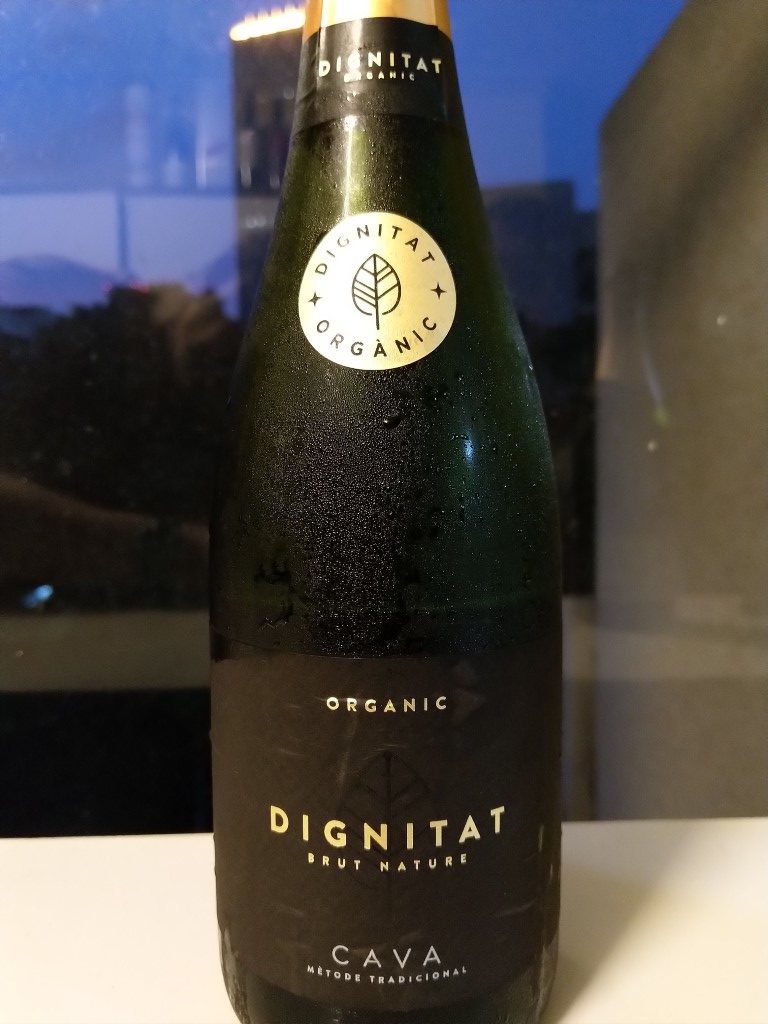This is fizzy wine from Spain, which means it’s Cava. You can see that right on the label. Metode Tradicional means it’s been in a limestone cave for years being hand-turned by riddlers each day until the fermentation solids are collected in the neck, ready to be shot out during the final bottling process. Either that or they have an enormous machine to rotate the bottles in a climate-controlled warehouse. Traditional method means the final fermentation occurs in the bottle, rather than a huge vat, or perhaps cuvée.
The word “organic” appears in at least two places in the photo above. I’m not sure how I feel about the organic wine movement. Viticulture can consume a lot of agricultural chemicals, pesticide and anti-fungals and so on. So do the organic producers satisfy themselves with a smaller and lower quality crop? No, they use ‘organic’ pesticides and anti-fungals, perhaps the same chemical but derived from ‘natural’ sources.
However, my views on the organic industry are not the subject of this post, not least as this very nice bottle was a gift from Sachi’s mum.
So… how is it Dan? I can testify that it’s not bad at all. It’s a brut so that means a crisp dry taste but not a super-dry that’s difficult to pair and sucks in your mouth until it looks like a cat’s bum. This one does exactly what you want a sparkling to do. Not too sweet, a nice sparkle on the tongue that lasts in the glass and a very mild white flavour (I guess you’d be surprised if there were flavours of, say, port in there).
I don’t think you’re going to especially impress anyone bringing this to a dinner party, but you’re not going to disappoint either. And if you’re inclined to do so, you can lord your organic credentials over the other guests.
